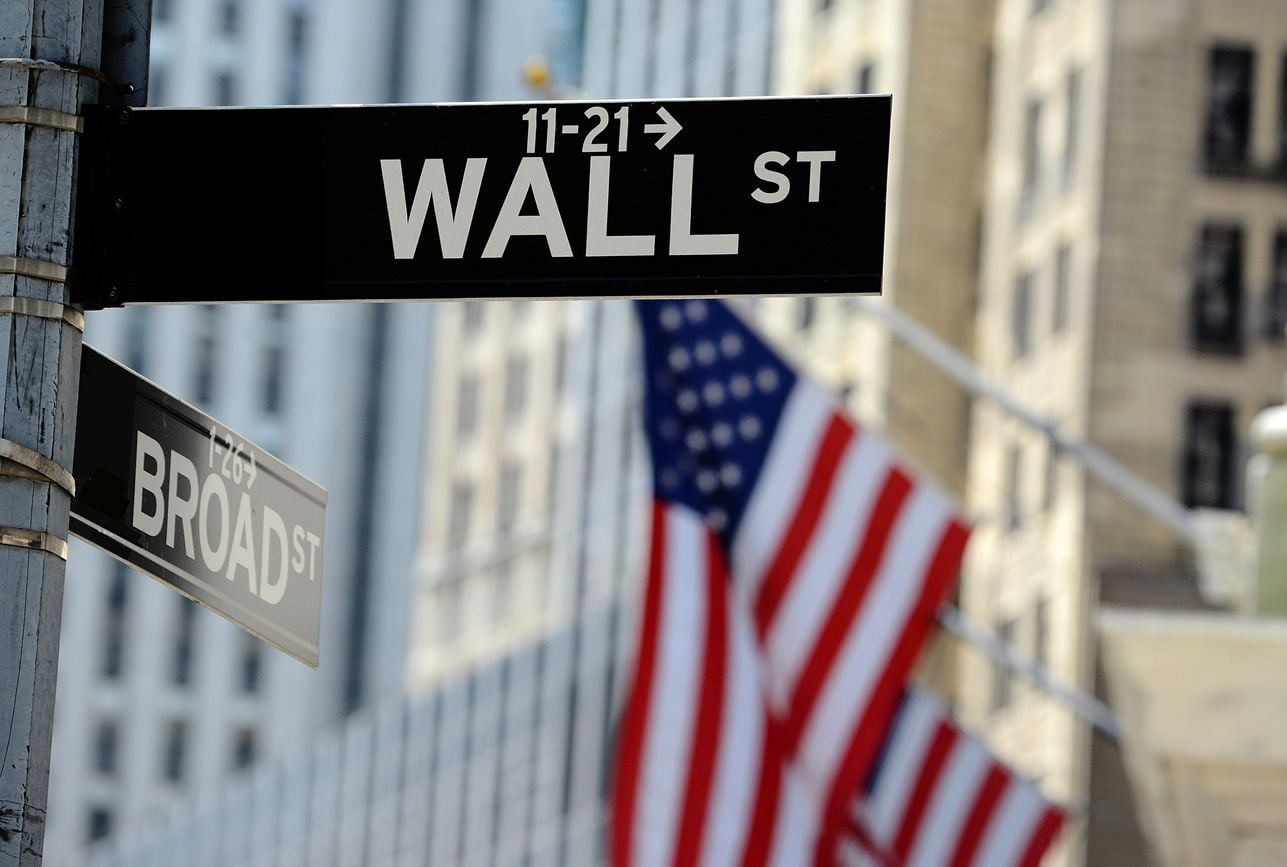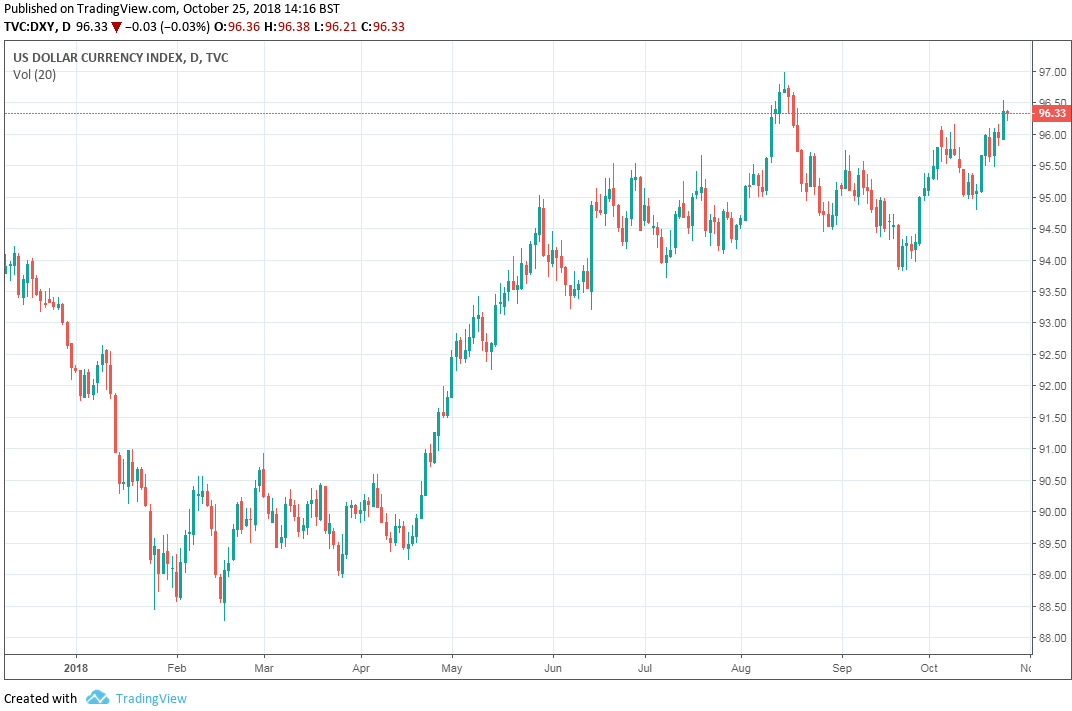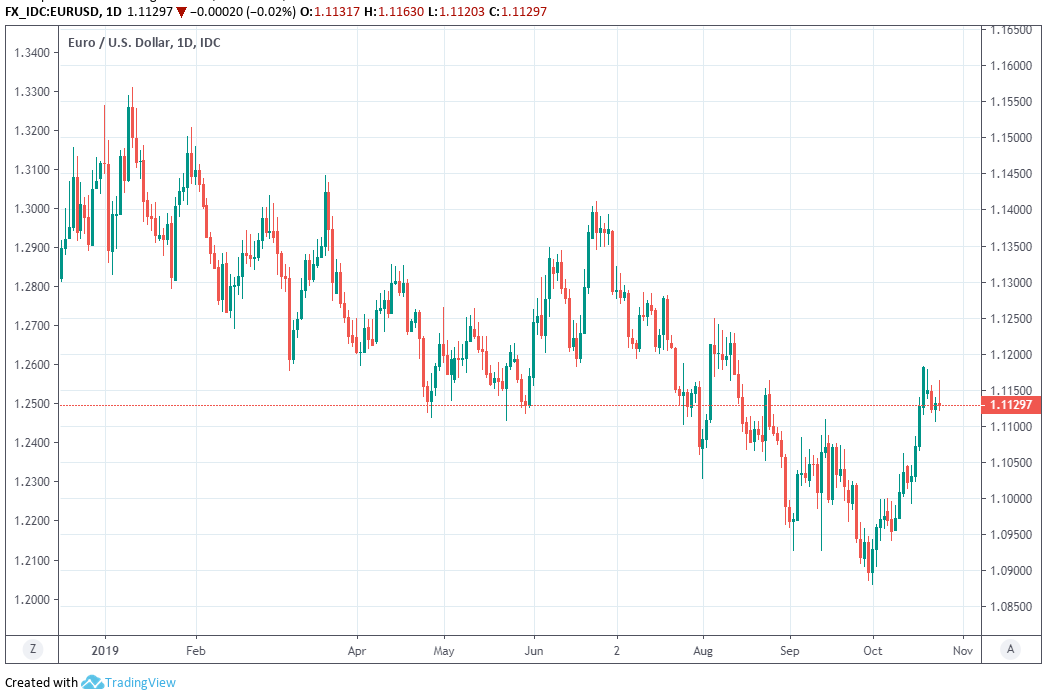U.S. Dollar to Dominate Markets into Year-end but a 2019 Capitulation is Coming says Nordea Markets
- Written by: James Skinner

© Robert Cicchetti, Adobe Stock
- USD to retain a steady bid into year-end says Nordea.
- Cites divergent interest rate and economic growth outlooks.
- But a capitulation is coming in 2019 as the tables turn on USD.
The Dollar will continue its reign of supremacy over other currencies into year-end, according to analysts at Nordea Markets, although the U.S. currency is seen capitulating to a range of adverse pressures once into 2019.
America's Dollar tends to strengthen, particularly against the Euro, around the year-end point due to what analysts often describe as seasonal factors. But macroeconomic developments also support the case for a continued strong performance from the Dollar this time round.
"EUR/USD has moved lower recently as the dollar has strengthened on the back of aggressive policy signals from the Federal Reserve and ongoing turbulence surrounding the Italian budget," says Andreas Steno Larsen, a currency strategist at Nordea Markets. "There are still signs of a strong USD in the very short term."
Larsen says that inflation in the U.S. remains higher than it is in the Eurozone, which supports a more favourable interest rate outlook on the other side of the Atlantic, although similar is true of the economic growth outlooks that are also strengthening the interest rate divergence story. underpinning the Dollar and the keeping
In addition, the Federal Reserve's so called shrinking of its balance sheet has reduced the supply of Dollars on the market and is expected to continue propping up the greenback for a while yet.
The Fed has stopped reinvesting monies it receives from maturing Treasury bonds held on its balance sheet, which means the number of Dollars washing around in the U.S. and international markets is steadily declining. Simple economic theory on supply and demand explains why this has supported the value of the Dollar.
Moreover, political uncertainty is once again running high in the Eurozone, given the ongoing clash between the Italian government and Brussels as well as the hapless state of the Brexit negotiations. All of these factors could support the Dollar and keep pressure on the EUR/USD into year-end.
"But we still see many tentative signs that this USD-o-meter will turn much colder within the next 2-4 months," says Larsen. "Another potential big hair in the otherwise positive USD soup is the possibility of a debt ceiling standoff scenario in early 2019."

Above: U.S. Dollar index shown at daily intervals.
The U.S. Dollar index quoted 0.17% lower at 96.26 Thursday but has risen 2.14% in the last month and is up 4.3% since the start of the year.
The Euro-to-Dollar rate was quoted 0.24% higher at 1.1428 Thursday but has fallen 2.99% in the last month alone and is now down 4.9% for 2018

Above: Euro-to-Dollar rate shown at daily intervals.
Advertisement
Bank-beating Euro-to-Dollar rates. Get up to 5% more foreign exchange by using a specialist provider to get closer to the real market rate and avoid the gaping spreads charged by your bank when providing currency. Learn more here
2019 Capitulation in Sight?
Larsen and the Nordea team are warning clients that the outlook for the Dollar could turn increasingly negative once into January, given an anticipated change in European Central Bank (ECB) policy and the implications of a series of likely political developments over in the U.S.
The European Central Bank's own balance sheet will begin to shrink in 2019 as commercial banks repay cheap loans dolled out over recent years in order to get the continental economy going again. Repayment of those loans will drain a relatively small amount of Euros from the system.
An eventual decision to stop reinvesting monies from maturing bonds held on the ECB balance sheet will also have an effect on the Euro, potentially in 2019.
Both the ECB and Federal Reserve have bough around to €80 billion and $80 billion worth of European and U.S. government bonds respectively, on a per month basis for extended periods of time since the crisis.
"Political uncertainty may become elevated in the US if the Democrats win the majority in the House in the mid-terms, as such a scenario leaves the door wide open for an impeachment process of Donald Trump," Larsen warns.
Political Uncertainty Threatens the USD
Americans go back to the polls on November 06 in order to determine the composition of the House of Representatives and, to a lesser extent, the Senate in what will be a crunch moment for global currency markets.
There is a long precedent of incumbent presidents seeing support for their respective parties decline in the regular midterm ballots and speculation that President Donald Trump will suffer the same has been feverish this year.
This is a problem because Republicans currently control both houses of Congress but have only a narrow majority that could easily be lost if voters plump for the Democrats, and the roots of the Dollar's 2018 renaissance are policies implemented by the Trump administration.
After all, it was Trump's agenda and Republican control of Congress that facilitated sweeping tax cuts that have driven the U.S. economy from strength to strength this year, even as the growth elsewhere in the world has slowed.
"Hence, we still consider further potential downside in EUR/USD to be short term, as relative liquidity withdrawal (USD-EUR) will eventually push the pair higher in mid-19 and beyond," Larsen says.
ECB to Lift EUR/USD in 2019
The European Central Bank has said it will stop buying government bonds at the end of the year and that it could begin to raise interest rates once "through the summer of 2019".
This would bring an end to the quantitative easing programme that has seen it hoover up European bonds in order to lift inflation by stimulating the economy, as well as the negative interest rate policy that pushed the deposit rate to -0.40%.
The ECB's pledges have prevented the Euro from handing all of 2017's gains back to a resurgent Dollar this year, but those commitments are contingent on a sustained return of inflation toward its target of "close to but below 2%".
Europe's main inflation rate is already at the ECB's target and Larsen says the core consumer price index, which strips volatile commodity items like energy and food out of the goods basket, could rise from 0.9% to 1.2% as soon as October.
"EUR/USD should move towards 1.16 within three months, while our end-2019 forecast is 1.23, as the ECB will start to move towards higher rates in late 2019," Larsen concludes.
Advertisement
Get up to 5% more foreign exchange by using a specialist provider to get closer to the real market rate and avoid the gaping spreads charged by your bank when providing currency. Learn more here




